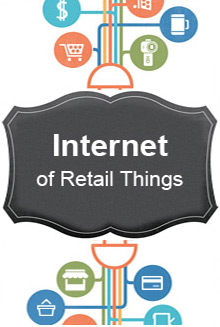Industry 4.0 has arrived. It has been an evolution over the years. Right from steam age (1.0) to electric age (2.0) to computer age (3.0) to the present (4.0). What really defines industrial 4.0 is the Internet of Things (IoT) and related services. The developing countries like India are set to gain from this as they are the greenfield for this revolution, whereas the existing industrial giants will be a little slower to adopt it due to existing investments.
The key theme of Industry 4.0 is a shift from mass production to mass customization. The goal is that the customers will have better experience with customization and products will turn into platform. The customers will chose what they want from the product and then the following 8 step cycle kicks off. (Each step is explained with an example of Automotive OEM and its manufacturing plant):
Step#1: The procurement system ensures individual components which the customer asks are procured.
Think of it as a portal for an automotive OEM asking for customization of the car with a custom colour, custom seat covers and some extra accessories. As these requests pour in from around the world, the manufacturing plant closest to the delivery location gets a list of components required. They are compared with the inventory available and anything which is short is ordered via the procurement system of the plant.
Step #2: The asset management system is automated to track the right parts to right products via the use of right sensors.
The parts which are specific to the vehicle are tagged to the specific customer request. These could be like NFC tags or RFID tags. A similar tagging will be done to the car body. So the system could be intelligent to map the parts to the car on the assembly line.
Step #3: Shop floor is automated to use the information about the customer request and sensor based smart components are assembled together to create the custom product.
Here there could be two specific things. If the parts to be fitted are to fitted by the line operator then an NFC enabled handheld device can scan and tell him about the specific part to be fitted. The automated assembly line also captures sensor data and machine takes appropriate action.
Step #4: Right quality control processes are applied to the custom product based on the customization.
In this step, along with the regular quality control process, the process also ensures that the right parts with right sensors are fitted on the right car. This is to ensure that the customization is properly done.
Step #5: The whole aspect of shipment and logistics is tracked so that the customer is aware of his custom product status.
As the vehicle gets out of the manufacturing unit, it is dispatched to the address where the customer wanted it delivered. Because of the sensors on the car, the customer is able to get the updates of the manufacturing completion, shipment and delivery on his mobile. Customer gets a high quality customized vehicle.
Step #6: Customer support folks are updated with the right information to be able to support custom products.
The specific SKU for the car is updated in the central database. When the car is sent either for service or a customer support representatives the details of the customization are available to give the right service.
Step #7: The product delivered to the customer is made smart to get customer insights into usage. This data is collected in analyzed.
The OEM continues to collect data about the usage of the car, the impact of the customizations on the customer experience, performance of the car etc. This will help the OEMs to see if it makes sense to create a new model at a larger scale for more popular customizations.
Step #8: New products are launched in the market based on the insights.
This cycle really ensures that there is individualization, end to end customer process and transparency of information to all the stakeholders.
It is not hard to imagine that the next logical evolution of this will be “Manufacturing as a Service” driven by Industrial IoT and 3D printing. But it is probably a little further away. Let’s come back to Industry 4.0.
There is talk of IT and OT professionals and this is probably just the start because for the above goal to be achieved, there are multiple players apart from IT and OT like the OEMs, suppliers, technology service providers, government bodies and standardization bodies. Technology needs to enable collaboration across each of these stake holders.
The technologies which can make this possible exist today, but there are still challenges in adoption. The four primary challenges which will prolong the debate for adoption are:
- Investments already made
- Lack of standardization and further simplification of IoT/ Industrial 4.0
- No clear framework for defining the value delivery in short term and long term
- Security risks
There are various consortiums which are trying to address standardization like IIC (Industrial Internet Consortium) and Industrial IP Advantage. This will be a slow process and people will try various things and de-facto implementations will shape the standards. There are challenges and there are pockets of adoption. Yet clearly, Industry 4.0 is here to stay.
Published in : Manufacturing Business Technology Magazine

Manu Tayal is a General Manager spearheading the IoT/M2M solutions and service offerings. He comes with a rich experience of 16 years in the IT industry. Within M2M/IoT his focus is on servicing product companies build the right solutions, right from devices to cloud to mobile enabled applications. His role involves technology direction, business development and capability building.
Manu holds a Bachelor’s degree from IIT Roorkee in Electronics and Communications. You can reach him at [email protected].






